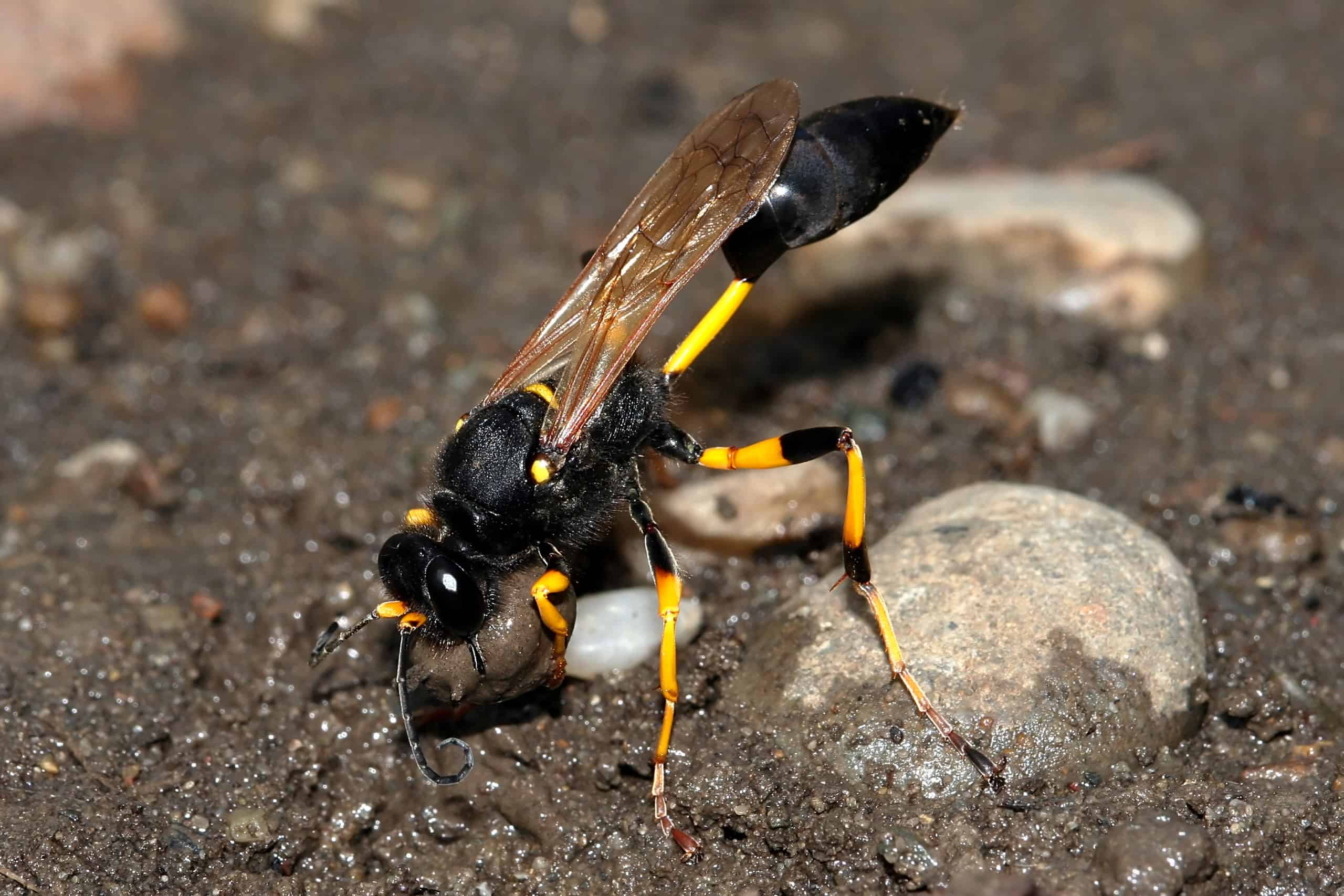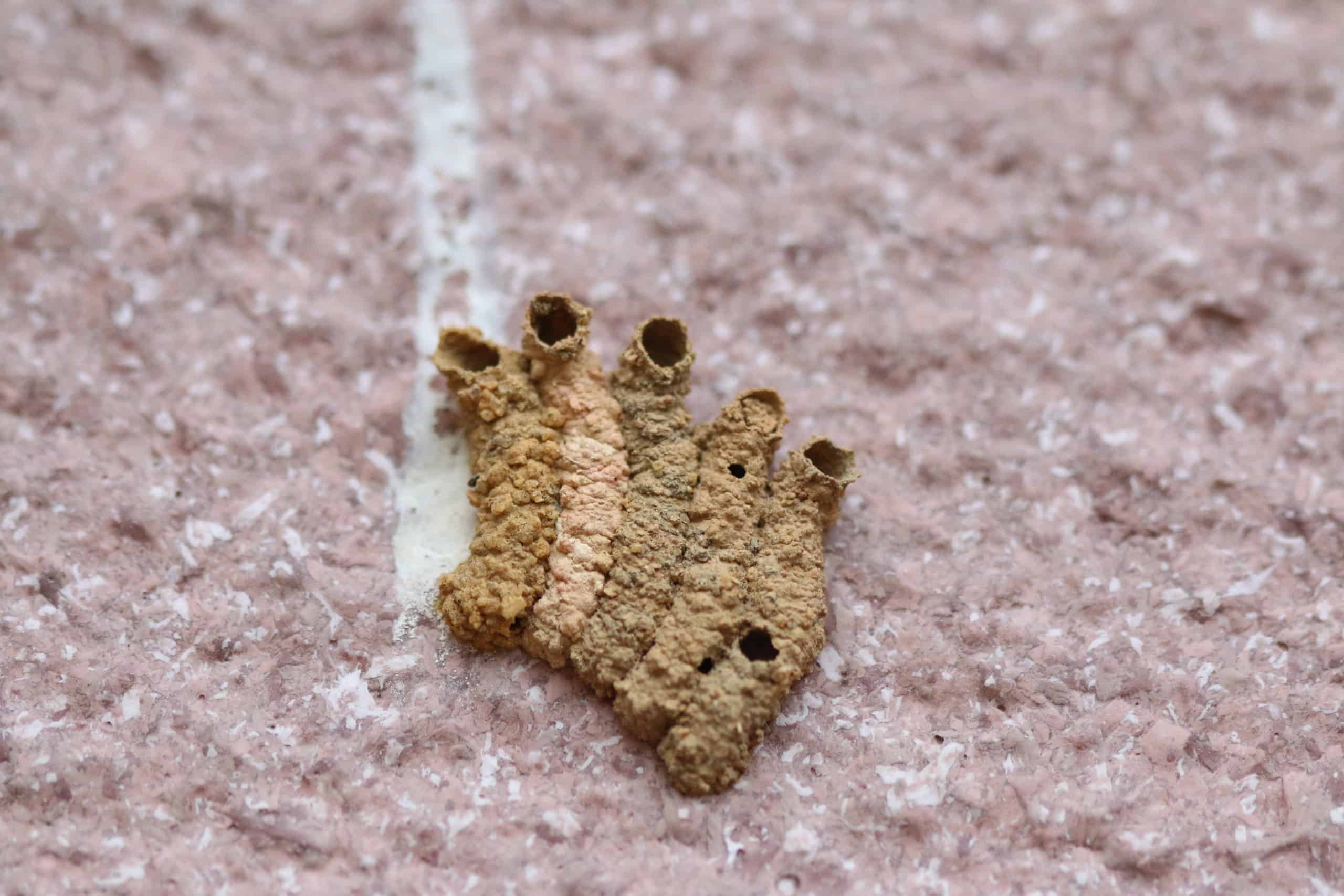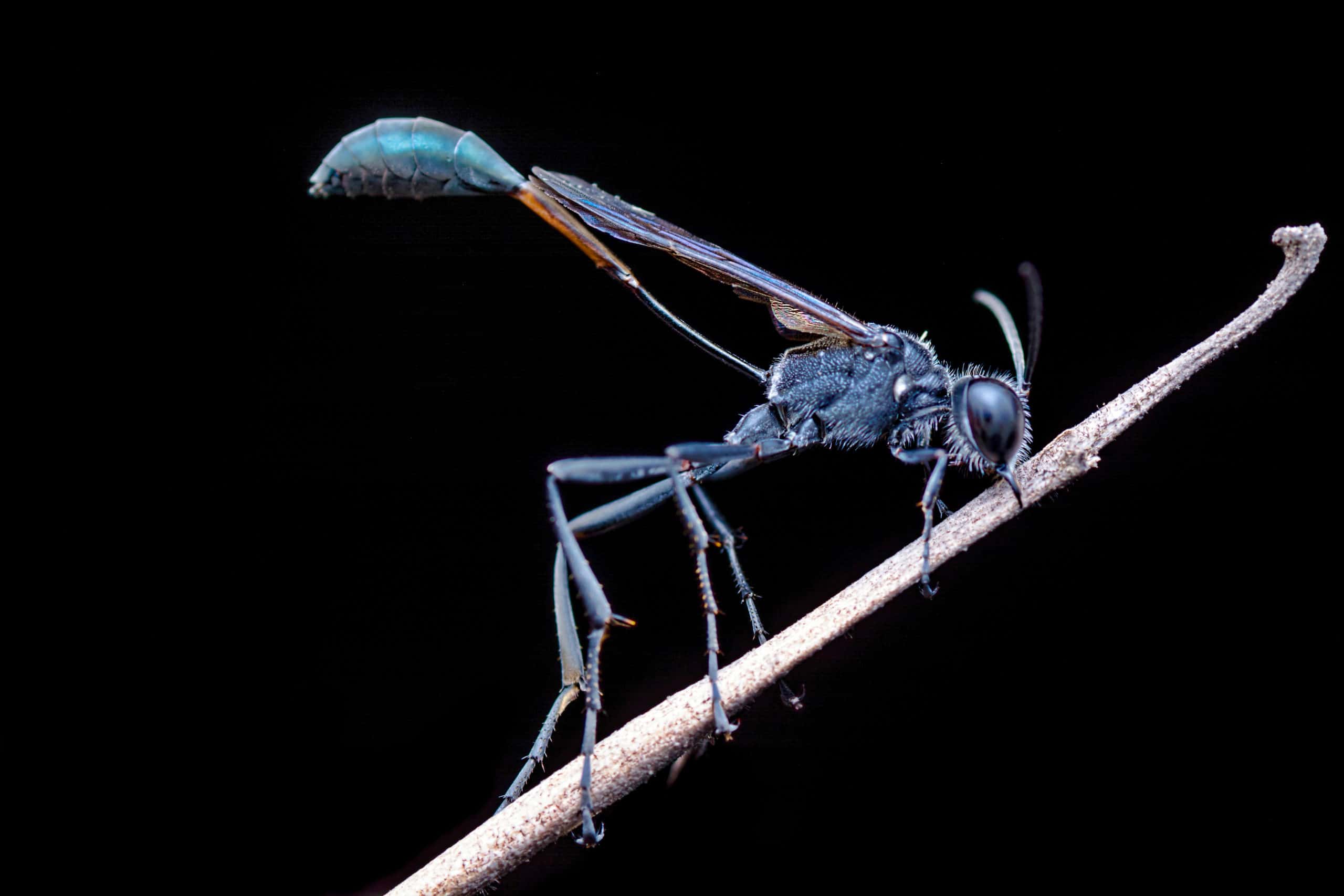Mud Dauber Wasps
Mud Dauber Wasps
Mud Dauber Wasps 101
Wasps are insects in the Hymenoptera order, but from there, they can vary somewhat drastically. More common wasps, such as paper wasps, are part of the Vespidae family, while other wasps are part of the lesser known Sphecidae or Crabronidae families. These wasps vary from Vespidae in both appearance, and their solitary nature.
The terms “mud dauber,” “mud wasp,” and “dirt daubers” are applied to several different wasps within the Sphecidae and Crabronidae families. The names make reference to the unique material the wasps use to construct their solitary nests. While normally fairly non-aggressive, these wasps can become rather agitated and attack when they feel threatened.

Appearance
The appearance of mud daubers can vary depending on the species, but most of them have a very slender, thread-like waist called a pedicel that connects their thorax to their abdomen. They tend to be darker in color and some have yellow or orange markings, while others can even be bright blue. Mud daubers have 6 legs, a pair of antennae and range in size from about 12mm – 26mm long.

Habitats/Colonies
As mentioned above, mud daubers are solitary wasps that do not form intricate colonies. Female mud daubers construct their nests in high up locations but, depending on the sub-species of mud dauber, these nests can vary in size and appearance.
Black and Yellow Mud Daubers – tube shaped nests with holes for entry/exit
Organ-Pipe Mud Daubers – various tubes clustered together like an organ pipe
Blue Mud Daubers – this metallic-blue species occupies empty nests of other mud daubers

Diet
Mud daubers can feed on nectar but are particularly known for hunting and consuming spiders. These unique wasps will even pack their nests with dead and disassembled spiders as a food source for themselves and their offspring.

Prevention
While mud daubers aren’t as outwardly aggressive as other types of wasps like yellow jackets or paper wasps, they can be dangerous and sting if disturbed. As such, it is important to steer clear if you ever come across a nest and be sure to call in the experts of wasp removal. At Green Pest Services, we can remove these wasp nests quickly and safely, so you don’t have to worry anymore. Call us today for more information on the removal of mud dauber wasps from your home.

Citations
Get Rid of Mud Daubers – Mud Dauber Stings, Info & More (no date) PestWorld. The National Pest Management Association. Available at: https://www.pestworld.org/pest-guide/stinging-insects/open-pipe-mud-daubers/ (Accessed: April 6, 2021).
Gibb, T. (2018) Mud Daubers, Purdue University – Entomology. Available at: https://extension.entm.purdue.edu/publications/E-253/E-253.html (Accessed: April 6, 2021).
Long, R. (2018) Why mud daubers are on spider patrol, ANR Blogs. The UC Division of Agriculture and Natural Resources. Available at: https://ucanr.edu/blogs/blogcore/postdetail.cfm?postnum=28834 (Accessed: April 6, 2021).
Powell, E. and Taylor, L. (2016) Black and Yellow Mud Dauber – Sceliphron caementarium, The Entomology Department of the University of Florida. The Florida Department of Agriculture and Consumer Services. Available at: https://entnemdept.ufl.edu/creatures/MISC/WASPS/Sceliphron_caementarium.htm (Accessed: April 6, 2021).
8 Creative Ways to Have a Pest-Free Fourth of July
8 Creative Ways to Have a Pest-Free Fourth of July 8 Creative Ways to Have a Pest-Free Fourth of July Summary: The Fourth [...]
A Simple Guide to Preventing Stinging Pests
A Simple Guide to Preventing Stinging Pests A Simple Guide to Preventing Stinging Pests Summary: Stinging insects are more active in warm weather, [...]
These 10 Natural Mosquito Repellents Can Actually Help
These 10 Natural Mosquito Repellents Can Actually Help These 10 Natural Mosquito Repellents Can Actually Help Summary: Natural mosquito repellents are easier to [...]
How to Get Rid of Carpet Beetles
How to Get Rid of Carpet Beetles How to Get Rid of Carpet Beetles Summary: Carpet beetles are sneaky pests that don’t usually [...]
How Do Roaches Affect Asthma and Allergies?
How Do Roaches Affect Asthma and Allergies? How Do Roaches Affect Asthma and Allergies? Summary: It’s no secret that pests impact human health, [...]
These 5 Carnivorous Pests Might Surprise You!
These 5 Carnivorous Pests Might Surprise You! These 5 Carnivorous Pests Might Surprise You! Summary: There are many eco-friendly ways to prevent pests, [...]

